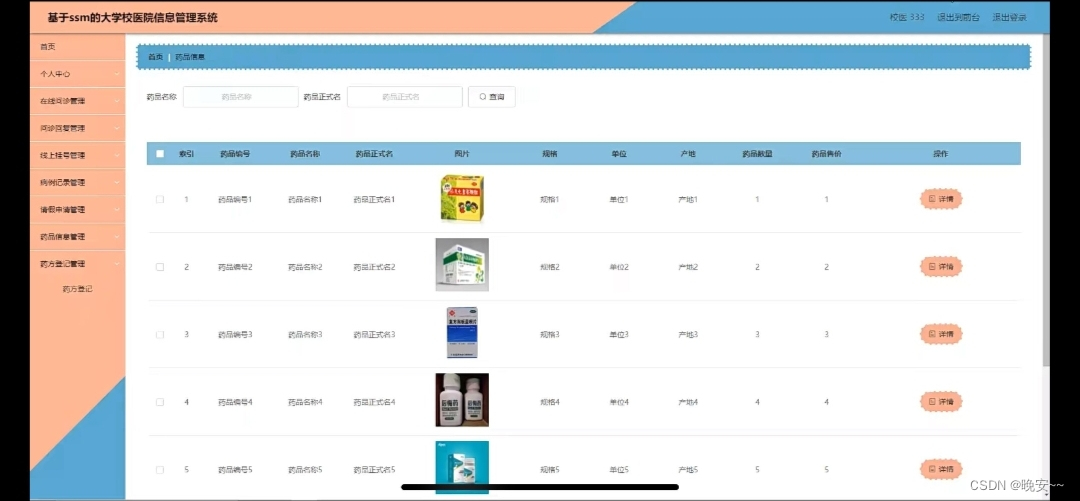☞返回总目录
相关总结:AutoSar AP CM实例说明符的使用方法总结
6.2 实例说明符的使用方法
一、InstanceSpecifier 的概念
InstanceSpecifier 是在 [3] 中定义的一个核心概念,它由符合特定模型元素绝对路径的模型元素 shortName 组成,表现为以 “/” 分隔的列表。通俗地说,InstanceSpecifier 在自适应平台模型和应用程序之间架起了桥梁,允许应用程序代码明确地引用由系统模型定义的资源实例。
InstanceSpecifier 所引用的实例可能有很多不同的种类:provided/required 服务实例、key/value 存储或 file 存储,或者加密资源等等。
二、InstanceSpecifier 在 C++ 语言绑定中的特征
在自适应平台的 C++ 语言绑定中,InstanceSpecifier 类有几个共同的特征:
- 不可默认构造。
- 可复制和可移动。
- 可与 StringView 和其他 InstanceSpecifier 对象进行比较。
- 可显式转换为 StringView。
有关更详细的信息,请参见 4.8.1 小节中的清单 4.2。
考虑到这些特性,创建一个非现有对象的副本或移动结果的新 InstanceSpecifier 对象的唯一方法是从一个 StringView 对象创建。
在实际应用中,这种 StringView 的内容在构造时仅进行语法检查而不进行语义检查。这意味着只要源 StringView 对象包含由仅由有效字符组成且以 “/” 分隔的名称列表,构造就会成功。该列表所描述的路径在(源自应用程序的)模型中的有效性将在不同的功能集群尝试访问或实例化由相关 InstanceSpecifier 指向的资源时进行检查。
三、使用示例
以下示例根据 [1:AUTOSAR_SWS_CommunicationManagement] 做成,InstanceSpecifier 可能通过骨架类和代理类来实例化和访问服务。InstanceSpecifier 指向与服务相关联的端口原型的实例。因此,可以为每个 PortPrototype 创建多个 InstanceSpecifier。在下面的示例中,SwComponentInstance_0 和 SwComponentInstance_1 是同一个 SwComponentPrototype 的两个实例化,它们包含 RPortPrototype RPort_3。
(一)使用骨架的实例说明符示例
#include "ara/core/instance_specifier.h"
#include "ara/com/sample/tire_skeleton.h"
class TireSkeletonImplementation :
public ara::com::sample::skeleton::TireSkeleton
{
public:
using TireSkeleton::TireSkeleton;
// 实现服务接口方法,如果有的话
};
int main()
{
const ara::core::InstanceSpecifier tire0_Instance{
"/ServerExe/RootSWCP_0/Comp_Lvl1/Comp_Lvl2
/SwComponentInstance_0/PPort_3"};
const ara::core::InstanceSpecifier tire1_Instance{
"/ServerExe/RootSWCP_0/Comp_Lvl1/Comp_Lvl2
/SwComponentInstance_1/PPort_3"};
TireSkeletonImplementation tire0(tire0_Instance);
TireSkeletonImplementation tire1(tire1_Instance);
// 当骨架实例运行、处理请求等时睡眠
return 0;
}
(二)使用代理的实例说明符示例
#include "ara/core/instance_specifier.h"
#include "ara/com/sample/tire_proxy.h"
int main()
{
using Proxy = ara::com::sample::proxy::TireProxy;
const ara::core::InstanceSpecifier tire0_Instance{
"/ClientExe/RootSWCP_0/Comp_Lvl1/Comp_Lvl2
/SwComponentInstance_0/RPort_3"};
const ara::core::InstanceSpecifier tire1_Instance{
"/ClientExe/RootSWCP_0/Comp_Lvl1/Comp_Lvl2
/SwComponentInstance_1/RPort_3"};
auto tire0_handles = Proxy::FindService(tire0_Instance).ValueOrThrow();
auto tire1_handles = Proxy::FindService(tire1_Instance).ValueOrThrow();
Proxy tire0(tire0_handles[0]);
Proxy tire1(tire1_handles[0]);
// 调用方法、订阅事件等
return 0;
}
四、AUTOSAR Adaptive 实现与特定于进程的清单
在这些例子中,AUTOSAR Adaptive 实现会管理具有独立上下文的特定于进程的清单。这些可以在进程启动时通过例如命令行参数、环境变量、工作目录内容或任何其他特定于实现的方式来指定。
6.2.1 从用户视角看基于清单的建模和配置 / 映射
用于查找服务的 InstanceSpecifier 映射到与该服务相关联的端口的特定实例。
使用 FindService 的 C++ 示例用法
#include "ara/core/instance_specifier.h"
#include "ara/com/sample/radar_proxy.h"
int main()
{
using Proxy = ara::com::sample::proxy::radarProxy;
//...
ara::core::InstanceSpecifier portSpecifier{
"fusionExe/fusion/radar_RPort"};
auto res = Proxy::FindService(portSpecifier);
//....
}
在应用设计中,可执行节点指定其根软件组件原型(RootSwComponentPrototype)。反过来,软件组件原型(SwComponentPrototype)定义一个或多个端口原型(PortPrototype)。
以下是相关的 XML 示例:
<?xml version="1.0" encoding="UTF-8"?>
<AUTOSAR xmlns="http://autosar.org/schema/r4.0" xmlns:xsi="http://www.w3.org/2001/XMLSchema-instance" xsi:schemaLocation="http://autosar.org/schema/r4.0 AUTOSAR_00049.xsd">
<AR-PACKAGES>
<AR-PACKAGE>
<AR-PACKAGE>
<SHORT-NAME>apd</SHORT-NAME>
<AR-PACKAGE>
<SHORT-NAME>da</SHORT-NAME>
<ELEMENTS>
<EXECUTABLE>
<SHORT-NAME>fusionExe</SHORT-NAME>
<CATEGORY>APPLICATION_LEVEL</CATEGORY>
<ROOT-SW-COMPONENT-PROTOTYPE>
<SHORT-NAME>fusion</SHORT-NAME>
<APPLICATION-TYPE-TREF DEST="ADAPTIVE-APPLICATION-SW-COMPONENT-TYPE">/apd/da/fusion</APPLICATION-TYPE-TREF>
</ROOT-SW-COMPONENT-PROTOTYPE>
</EXECUTABLE>
<ADAPTIVE-APPLICATION-SW-COMPONENT-TYPE>
<SHORT-NAME>fusion</SHORT-NAME>
<PORTS>
<R-PORT-PROTOTYPE>
<SHORT-NAME>radar_RPort</SHORT-NAME>
<REQUIRED-INTERFACE-TREF DEST="SERVICE-INTERFACE">/apd/da/radar</REQUIRED-INTERFACE-TREF>
</R-PORT-PROTOTYPE>
</PORTS>
</ADAPTIVE-APPLICATION-SW-COMPONENT-TYPE>
<SOMEIP-SERVICE-INTERFACE-DEPLOYMENT>
<SHORT-NAME>radar_Someip</SHORT-NAME>
<!-- ...... -->
</SOMEIP-SERVICE-INTERFACE-DEPLOYMENT>
</ELEMENTS>
</AR-PACKAGE>
</AR-PACKAGE>
</AR-PACKAGE>
</AR-PACKAGES>
</AUTOSAR>
请参见图 6.1 中的 SOME/IP 服务接口部署。Required 服务实例(RequiredServiceInstance)和实例说明符(InstanceSpecifier)之间的映射是通过服务实例清单(Service Instance Manifest)完成的。在服务实例清单中,服务实例到端口原型映射(ServiceInstanceToPortPrototypeMapping)定义了哪个服务实例与特定根软件组件原型(RootSwComponentPrototype)内的某个端口相关联。Required 服务实例将实例 ID 指定为 Required 服务实例 ID(RequireServiceInstanceId),在下面的示例中,此值为 19。
以下是相关的 XML 示例:
<?xml version="1.0" encoding="UTF-8"?>
<AUTOSAR xmlns="http://autosar.org/schema/r4.0" xmlns:xsi="http://www.w3.org/2001/XMLSchema-instance" xsi:schemaLocation="http://autosar.org/schema/r4.0 AUTOSAR_00049.xsd">
<AR-PACKAGES>
<AR-PACKAGE>
<AR-PACKAGE>
<SHORT-NAME>apd</SHORT-NAME>
<AR-PACKAGE>
<SHORT-NAME>da</SHORT-NAME>
<AR-PACKAGE>
<ELEMENTS>
<SHORT-NAME>instance</SHORT-NAME>
<SOMEIP-SERVICE-INSTANCE-TO-MACHINE-MAPPING>
<SHORT-NAME>radar_RequiredServiceInstance_toMachine</SHORT-NAME>
<COMMUNICATION-CONNECTOR-REF DEST="ETHERNET-COMMUNICATION-CONNECTOR">/apd/da/fusionMachineDesign/fusionCommunicationConnector</COMMUNICATION-CONNECTOR-REF>
<SERVICE-INSTANCE-REFS>
<SERVICE-INSTANCE-REF DEST="REQUIRED-SOMEIP-SERVICE-INSTANCE">/apd/da/instance/radar_RequiredSomeipServiceInstance</SERVICE-INSTANCE-REF>
</SERVICE-INSTANCE-REFS>
<UDP-PORT>33111</UDP-PORT>
</SOMEIP-SERVICE-INSTANCE-TO-MACHINE-MAPPING>
<SERVICE-INSTANCE-TO-PORT-PROTOTYPE-MAPPING>
<SHORT-NAME>radar_RequiredServiceInstance_toPort</SHORT-NAME>
<PORT-PROTOTYPE-IREF>
<CONTEXT-ROOT-SW-COMPONENT-PROTOTYPE-REF DEST="ROOT-SW-COMPONENT-PROTOTYPE">/apd/da/fusionExe/fusion</CONTEXT-ROOT-SW-COMPONENT-PROTOTYPE-REF>
<TARGET-PORT-PROTOTYPE-REF DEST="R-PORT-PROTOTYPE">/apd/da/fusion/radar_RPort</TARGET-PORT-PROTOTYPE-REF>
</PORT-PROTOTYPE-IREF>
<PROCESS-REF DEST="PROCESS">/apd/da/fusion_instance1</PROCESS-REF>
<SERVICE-INSTANCE-REF DEST="REQUIRED-SOMEIP-SERVICE-INSTANCE">/apd/da/instance/radar_RequiredSomeipServiceInstance</SERVICE-INSTANCE-REF>
</SERVICE-INSTANCE-TO-PORT-PROTOTYPE-MAPPING>
<REQUIRED-SOMEIP-SERVICE-INSTANCE>
<SHORT-NAME>radar_RequiredSomeipServiceInstance</SHORT-NAME>
<SERVICE-INTERFACE-DEPLOYMENT-REF DEST="SOMEIP-SERVICE-INTERFACE-DEPLOYMENT">/apd/da/deployment/radar_Someip</SERVICE-INTERFACE-DEPLOYMENT-REF>
<!-- ...... -->
<REQUIRED-MINOR-VERSION>0</REQUIRED-MINOR-VERSION>
<REQUIRED-SERVICE-INSTANCE-ID>19</REQUIRED-SERVICE-INSTANCE-ID>
</REQUIRED-SOMEIP-SERVICE-INSTANCE>
</ELEMENTS>
</AR-PACKAGE>
</AR-PACKAGE>
</AR-PACKAGE>
</AR-PACKAGE>
</AR-PACKAGES>
</AUTOSAR>

注意:可执行文件可以多次启动。每个进程都使用不同的服务实例清单启动,因此在不同的进程之间,实例说明符(InstanceSpecifier)和 Required 服务实例(RequiredServiceInstance)之间的映射将有所不同。
6.2.2 仅针对所提供服务的实例 ID
实例说明符(InstanceSpecifier)和实例标识符(InstanceIdentifier)可用于唯一标识所提供的服务。这意味着客户端知道他们正在与哪个特定的服务实例进行通信。对于所提供的服务,缺少此信息。客户端无法使用实例标识符进行唯一标识,因此服务器无法确定它正在与哪个客户端进行通信。在大多数情况下,这不是问题,但是我们设想,对于安全性而言,这可能是一个问题。对于这些情况,我们建议使用方法 E2E_check 的 E2E 参数 dataID(请参见 [10:E2E Protocol Specification AUTOSAR_PRS_E2EProtocol] 中的 [PRS_E2E_00323])。



















